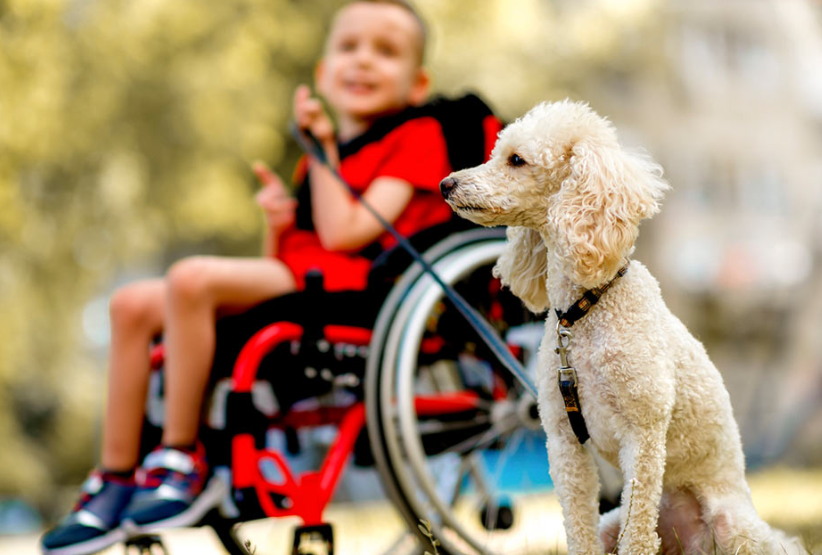Therapy dogs have become an essential part of support and care for children with special needs. These gentle and well-trained animals bring more than companionship. They offer emotional comfort, social connection, and even therapeutic benefits that can enhance a child’s quality of life. The bond between a child and a therapy dog is powerful and nurturing, creating a safe environment where learning, healing, and personal growth can flourish. That’s why therapy dogs for special needs play such an important role in helping children build confidence, independence, and emotional strength.
Understanding the Role of Therapy Dogs
Therapy dogs are specially trained to provide comfort, affection, and emotional support to individuals in need. Unlike service dogs, which assist with specific physical tasks, therapy dogs focus on providing psychological and emotional benefits. For children with special needs, they act as calming companions who can help reduce anxiety, improve mood, and encourage communication.
These dogs are chosen for their friendly temperament, patience, and ability to respond well to human emotions. Through their presence, they create a sense of safety and trust, which is especially valuable for children who may struggle with sensory sensitivities, social interaction, or emotional regulation.
Emotional Support and Comfort
One of the most profound effects of therapy dogs is their ability to offer emotional stability. Many children with special needs experience moments of frustration, fear, or confusion. A therapy dog’s calm and consistent presence provides a grounding effect, helping them feel secure and understood.
The physical act of petting or hugging a dog can lower stress hormones, slow the heart rate, and release oxytocin—the “feel-good” hormone associated with bonding. This soothing interaction helps children manage emotions, improve focus, and build resilience in challenging situations.
Encouraging Social Interaction
Socialization can be difficult for some children with special needs, particularly those on the autism spectrum or with developmental delays. Therapy dogs act as a bridge in social settings, encouraging children to engage more comfortably with peers and adults.
When a therapy dog is present, children often feel less pressure to communicate verbally and more motivated to express themselves through gestures, touch, or facial expressions. This shared connection can lead to improved social confidence, better communication skills, and a willingness to interact more openly in various environments such as classrooms or therapy sessions.
See also: Extend the Life of Your Roof with Professional Central Coast Repairs
Promoting Physical and Cognitive Development
Therapy dogs also play a significant role in promoting physical and cognitive growth. Simple activities such as walking, grooming, or playing fetch with a dog can enhance motor skills, balance, and coordination. These physical interactions are often seen as fun rather than structured therapy, which keeps children engaged and motivated.
In addition to physical development, therapy dogs encourage cognitive progress. Children can participate in tasks such as giving commands, following routines, or reading aloud to the dog. These exercises not only strengthen memory and comprehension but also foster patience, focus, and responsibility.
Building Confidence and Independence
Many children with special needs face challenges that affect their confidence and sense of independence. Working with a therapy dog allows them to experience small but meaningful successes. Whether it’s teaching the dog a new trick or leading it during a walk, each positive interaction helps reinforce self-esteem and accomplishment.
Over time, children develop a sense of autonomy and self-worth, learning that they are capable of caring for another living being. This empowerment often extends beyond the therapy setting, influencing their behavior and confidence in daily life.
Reducing Anxiety and Stress
Therapy dogs have an innate ability to sense emotions and respond with empathy. Their nonjudgmental nature and unconditional affection make them ideal companions for children dealing with anxiety or sensory overload.
Simply having a dog nearby can reduce feelings of nervousness or overstimulation. Many therapy sessions begin with quiet moments of interaction between the child and the dog, allowing the child to relax before engaging in other therapeutic activities. This reduction in anxiety can make a significant difference in the child’s ability to focus, learn, and communicate effectively.
Creating Joy and Connection
Beyond their therapeutic benefits, therapy dogs bring joy and excitement to children’s lives. Their playful and affectionate nature helps transform therapy from something clinical into something enjoyable. Laughter, smiles, and positive emotions are often seen during therapy sessions, making the experience more engaging and memorable for children.
This emotional connection fosters trust not just with the dog but with the people involved in the child’s care. It strengthens relationships between children, families, and caregivers, contributing to a more holistic approach to support and development.
Conclusion
Therapy dogs offer a unique combination of emotional, social, and developmental benefits that make them incredibly effective companions for children with special needs. Through their gentle nature and intuitive understanding of human emotions, they help children overcome challenges, build confidence, and find comfort in moments of uncertainty.
The presence of a therapy dog can transform therapy into a joyful experience, where progress happens naturally through love, trust, and connection. For many children, these dogs are more than companions—they are loyal friends who help open the door to growth, independence, and happiness.


















